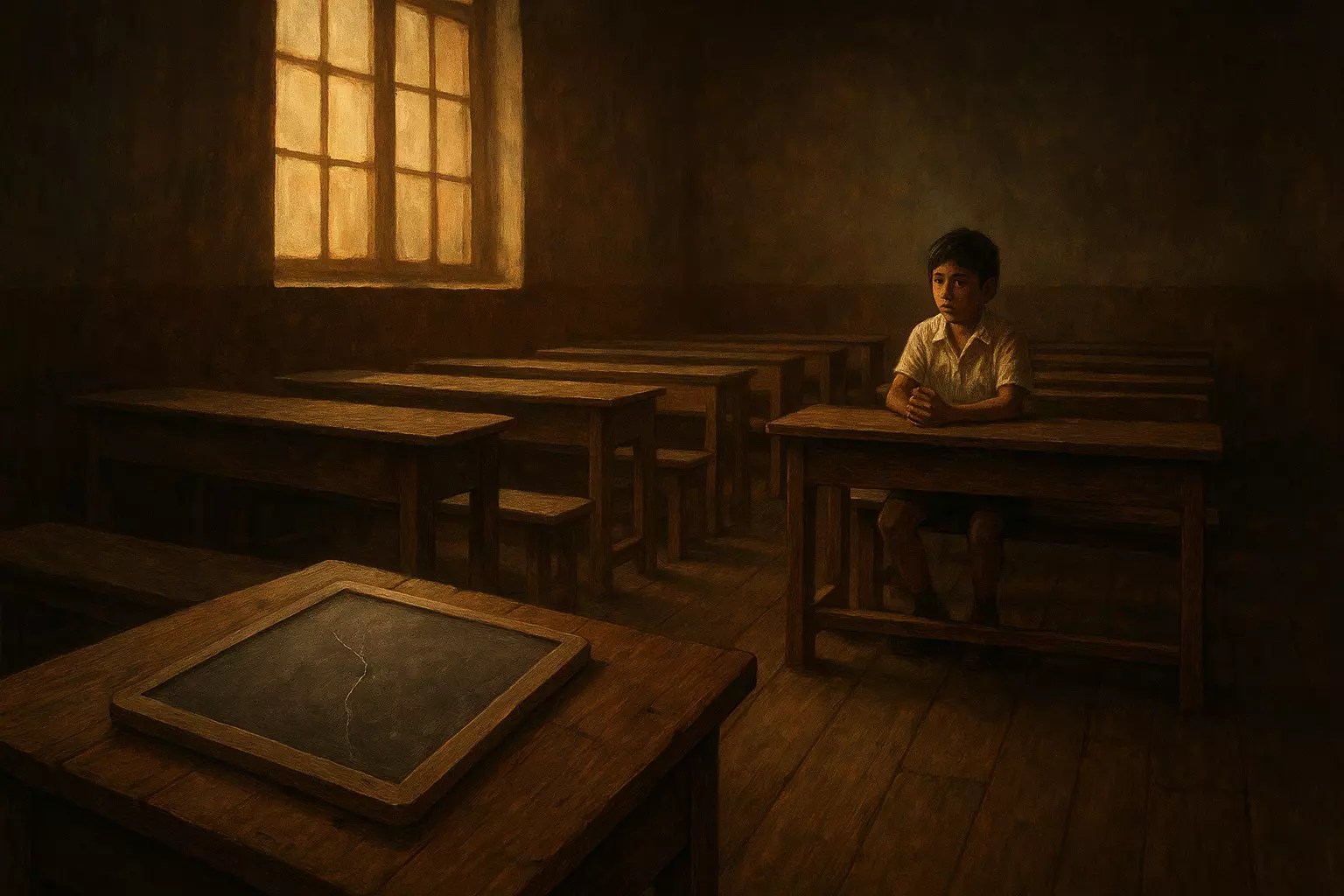Memoir of Silent Scars
Through luminous simplicity and emotional precision, Adhir Biswas lays bare the architecture of caste and the quiet heroism of survival, reminding us that compassion is resistance

The Last Bench is a profoundly moving and hauntingly evocative autobiographical memoir that lays bare the interwoven realities of caste-based discrimination and poverty through a child’s untainted consciousness and innocent eyes. The book begins with a spine-tingling statement that “Your father touches you. Just as your ancestors did, they touch you with their caste.” This striking statement immediately transports the reader into a social landscape where identity itself becomes an inherited stigma.
In the book, the author recounts his experiences in the classroom, describing how the stigma of untouchability defined his earliest encounters with education. Despite his diligence, he carefully inscribed every word on his cracked slate, but he was always made to sit on the last bench and denied even the simple right to ask a question. From the very first day, his teacher chose to address him not by his surname Biswas, but as Parmanik, solely because he belonged to a barber’s (nai) family.
Born into a family of barbers, young Adhir assisted his father in calling customers to their shop. Yet, his father believed education to be the only viable escape from the shackles of poverty and therefore enrolled him in the local school at the tender age of six or seven. However, a bright and studious boy who loved going to school, he was relegated to the last bench and made invisible. Despite securing second place in the annual exam, he repeatedly contemplates dropping out, just as his three older brothers had already dropped out.
After this, while narrating the remarkable tenderness and detailed story of the first day of going to school, Adhir writes that when he got ready to go to school on the first day, his mother stopped him and anxiously started searching for something. Restless and worried about being late, Adhir asked her again and again why she was delaying him. She replied, “Wait, just a moment — the kajal box was near the candle. Did you move it?” When he asked, “Why do you need kajal?” she finally found it, held him close, and placed a small dot of kohl on his forehead. A fleeting moment of warmth before he steps into a world that will soon turn hostile. This simple act of maternal affection captures the unspoken intimacy and protective love between mother and son. This incident evokes the same emotional connection in readers that existed between them at that time.
In the succeeding sections, the author traces how an innocent child, driven by intense curiosity, questions the invisible boundaries governing his existence: why he is forbidden from drawing water from the village well, why his peers refuse to play with him, and why children of the so-called higher castes feel entitled to beat him with impunity, leaving him bloodied and humiliated. He cannot understand why his father’s barber shop remains empty of customers, or why his father vents his anger on him, while his mother watches in silent horror. Violence is everywhere, both outside and inside the home, and it creates a deep impact on the young consciousness of this innocent child. It becomes a tangible part of his life’s reality that he cannot understand, but can always feel deeply.
Adhir reveals that his only refuge in this hostile world is his frail and ailing mother. Together, they wander along forest paths and the outskirts of the village, seeking brief intervals of peace in each other’s quiet companionship. Through their shared gaze, they observe the world with a melancholic serenity. After her death, he finds a wordless companion in his dog, “Bhambol”, a loyal creature who follows him faithfully like a shadow, offering silent solidarity in a world that refuses to see him. The text of the book reflects the author’s loneliness and agonising deprivation, as he dreams only of adequate food, clean clothes, and respect for his ailing mother. His naïve yet profound questions compel readers to confront the normalised brutality of caste hierarchies and economic precarity. Written through the lens of a child, Adhir exposes the structural violence of inequality. His prose, though unadorned, resonates with profound emotional depth and authenticity born of lived experience.
Ultimately, The Last Bench transcends the boundaries of personal memoir to emerge as a powerful moral document — a fusion of innocence and awakened consciousness that becomes an urgent call for social justice. The narrative’s brilliance lies in its seamless interweaving of a child’s unclouded perception with the adult’s reflective understanding of systemic oppression. It draws readers into both the emotional and intellectual dimensions of caste-based injustice. Adhir reminds us that dignity is not a privilege but an inalienable human right. His story insists that caste is not merely a remnant of the past but a living, festering wound — manifesting in everyday silences, in the violence disguised as discipline, and in the nameless absences that define social exclusion. It dictates who is granted belonging and opportunity, who is taught to aspire, and who is quietly erased into oblivion.
Yet, through the act of remembrance and writing, Biswas reclaims that forgotten child, refusing the erasure of his existence. The Last Bench must be read not only to understand the struggles of the marginalised but also to remind ourselves that compassion remains humanity’s only true remedy for suffering. Exquisite, devastating, and unforgettable, it is a story that lingers long after the final page is turned.



